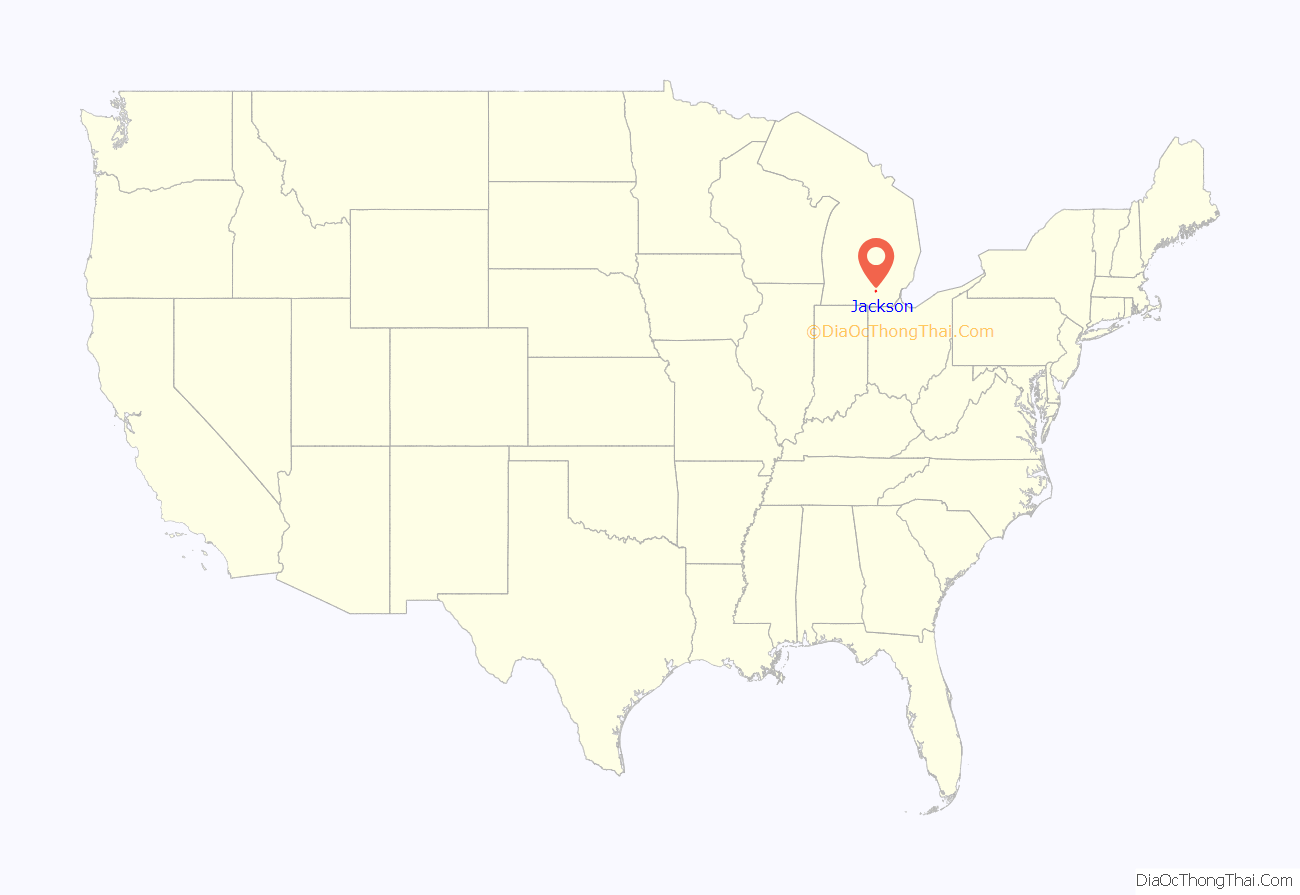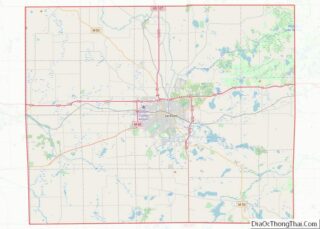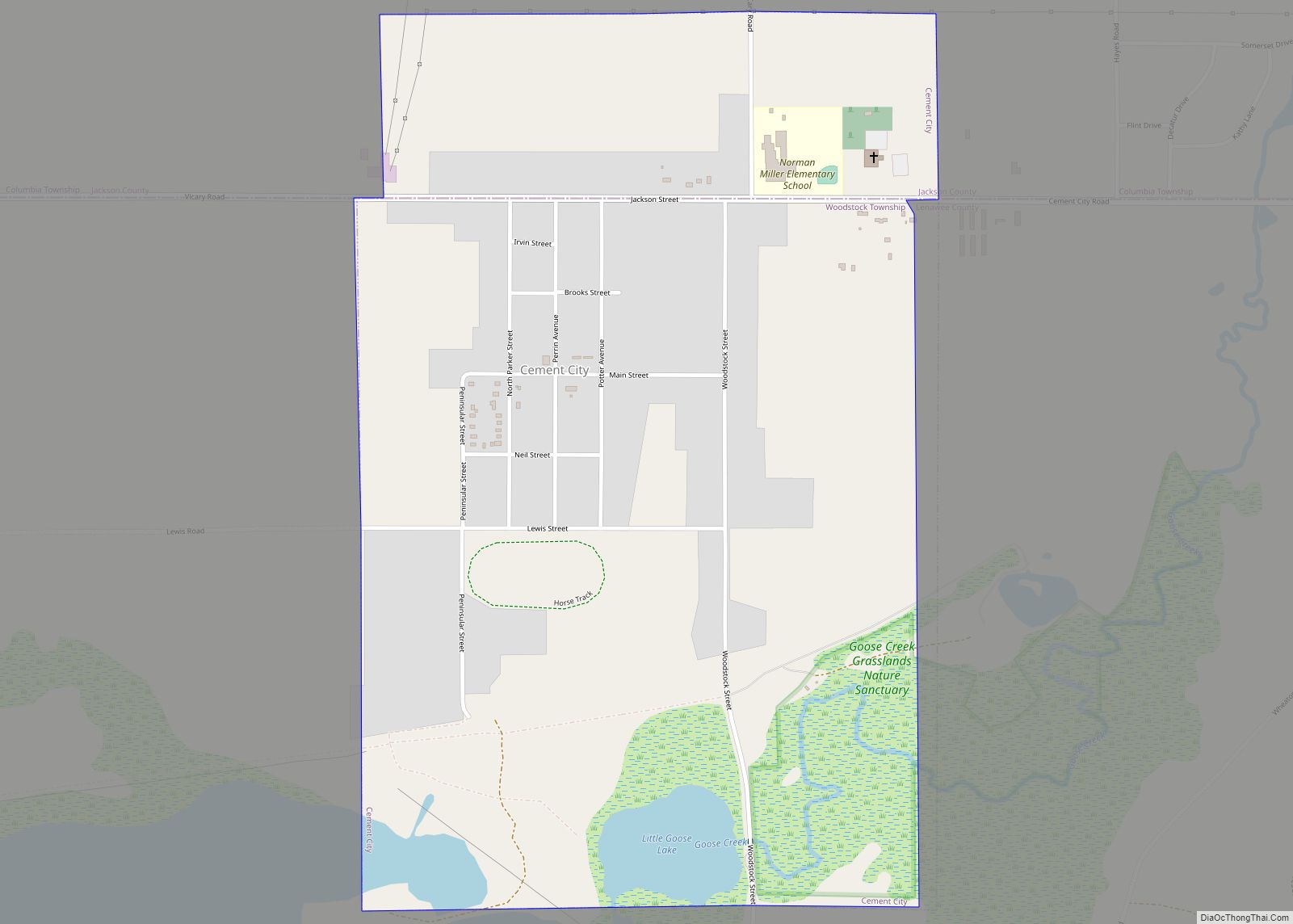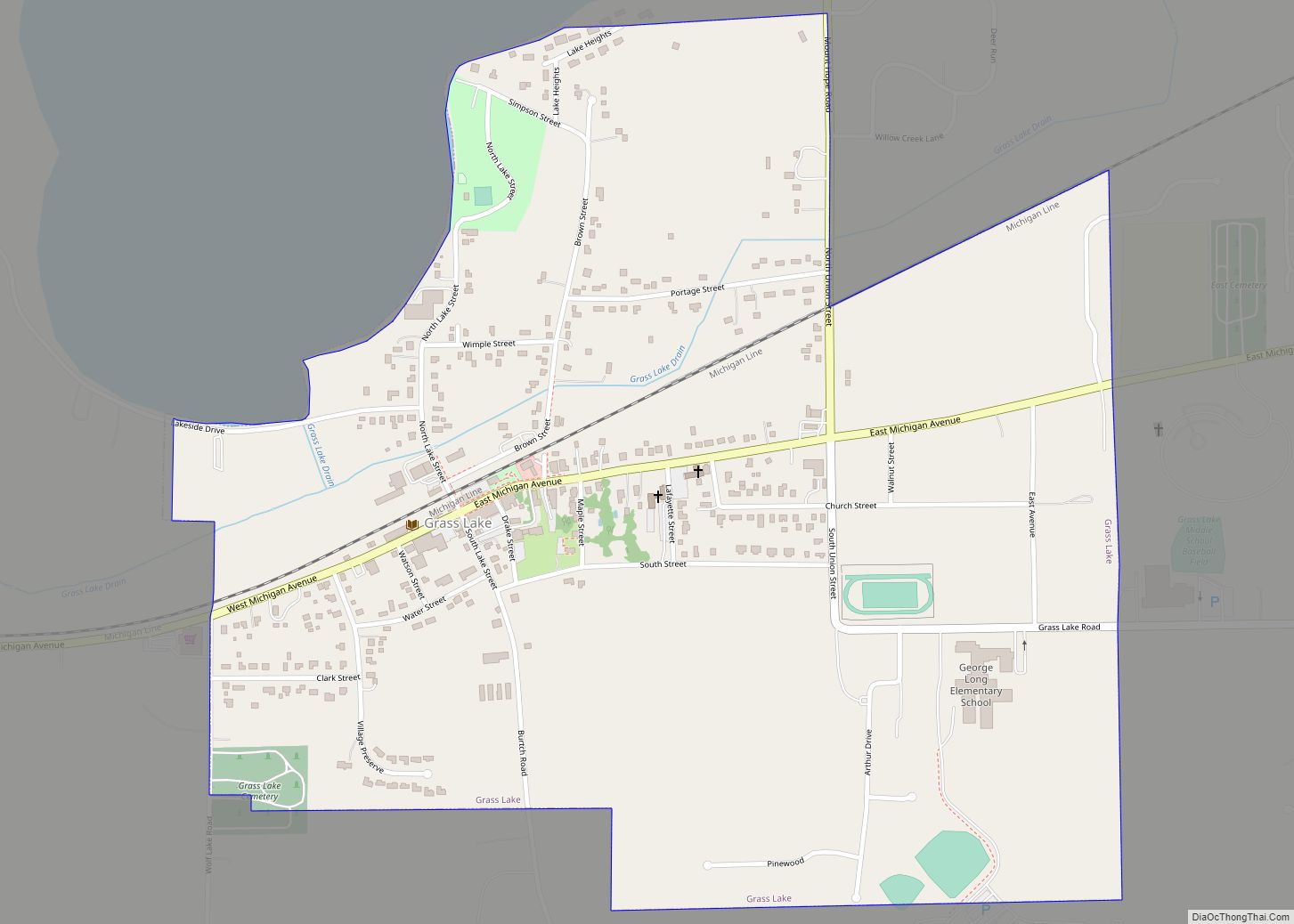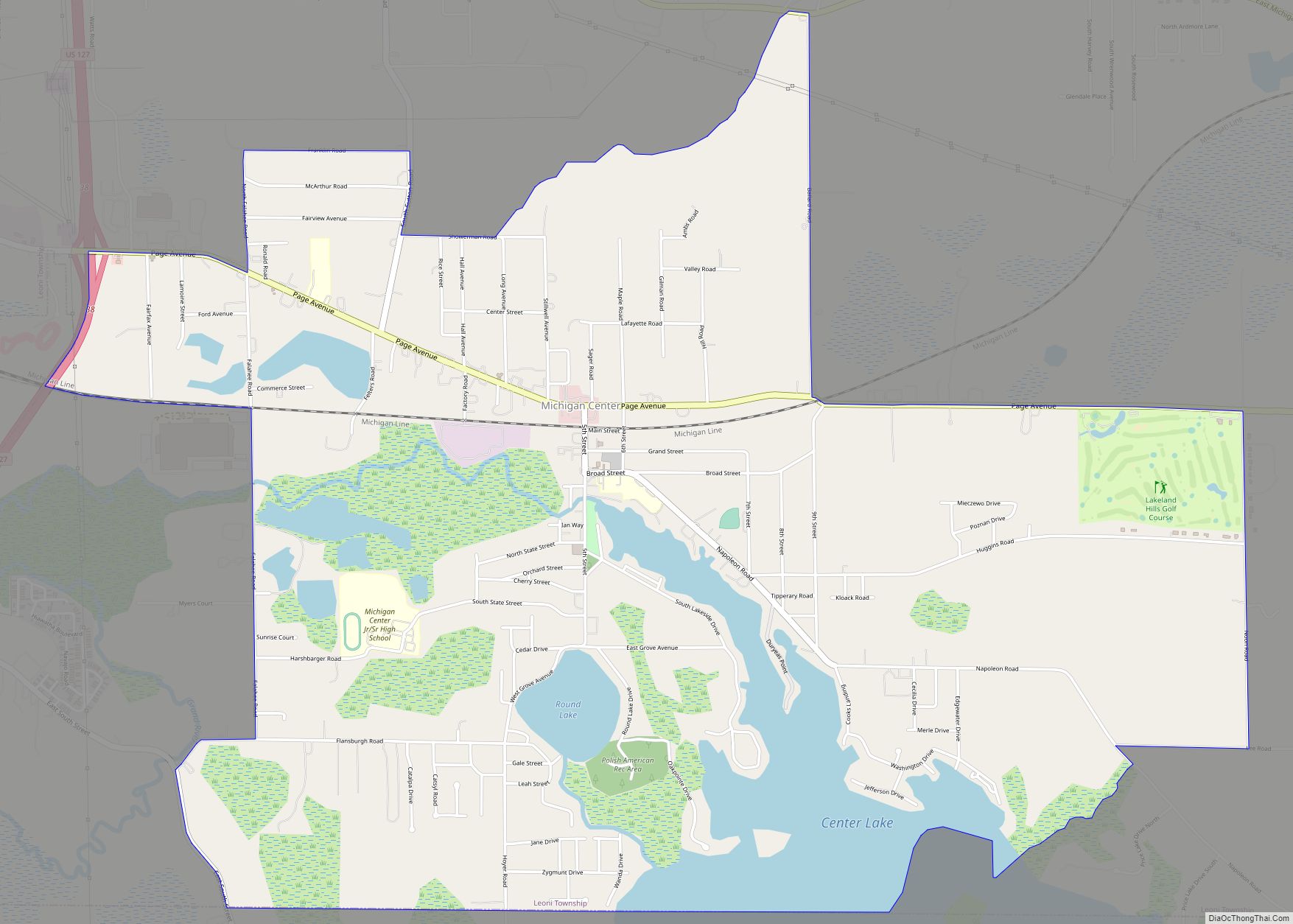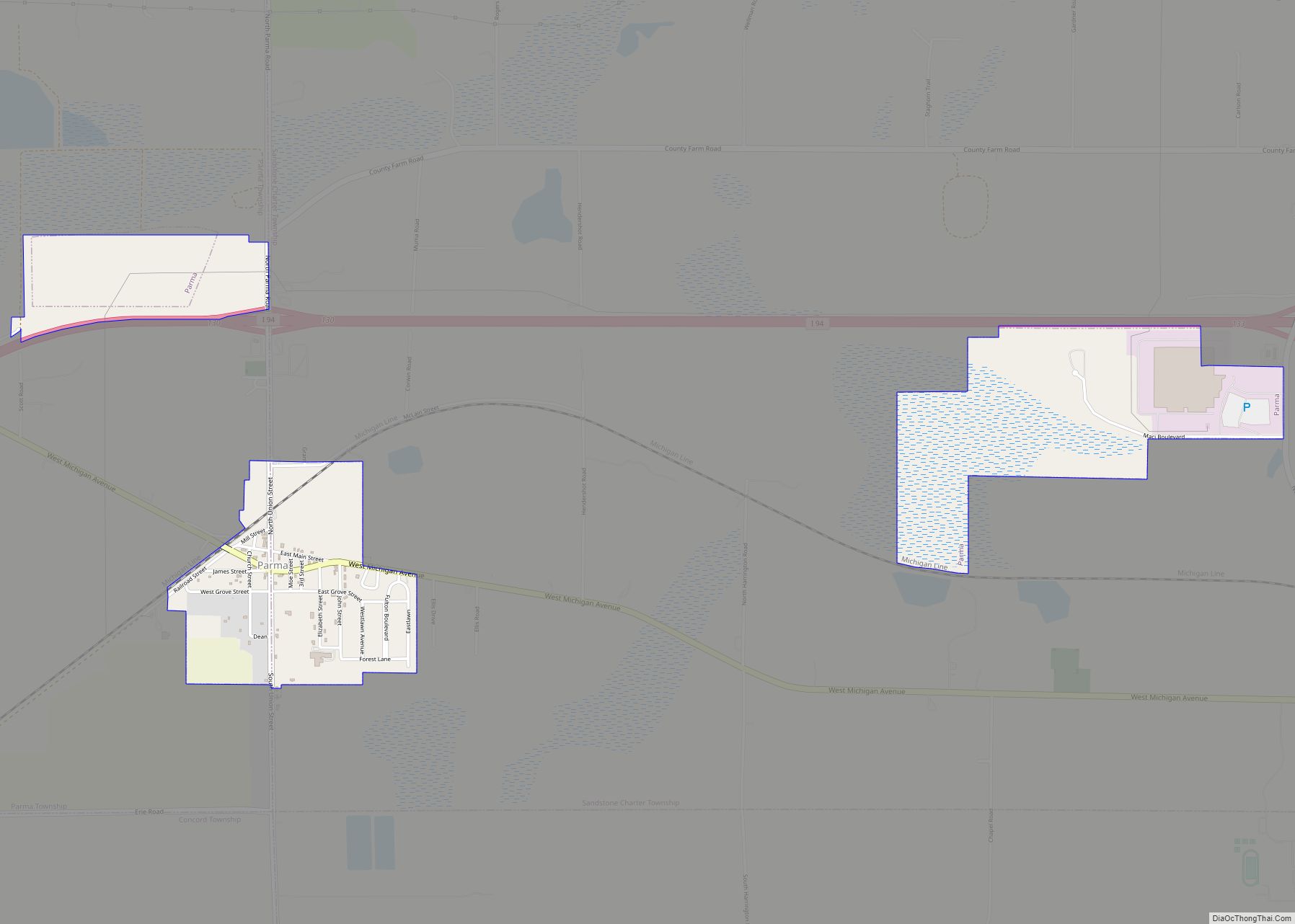Jackson is the only city and county seat of Jackson County in the U.S. state of Michigan. As of the 2020 census, the city population was 31,309. Located along Interstate 94 and U.S. Route 127, it is approximately 40 miles (64 km) west of Ann Arbor and 35 miles (56 km) south of Lansing. Jackson is the core city of the Jackson Metropolitan Statistical Area, which includes all of Jackson County and population of 160,248.
Founded in 1829, it was named after President Andrew Jackson. Michigan’s first prison, Michigan State Prison (or Jackson State Prison), opened in Jackson in 1838 and remains in operation. For the longest time, the city was known as the “birthplace of the Republican Party” when politicians met in Jackson in 1854 to argue against the expansion of slavery, although the political party now formally recognizes its birthplace as being Ripon, Wisconsin. Nevertheless, the Republican Party’s earliest history dates back to Jackson and is commemorated by a plaque in the city’s Under the Oaks City Park, which has since been visited by numerous Republican presidents.
At the beginning of the twentieth century, Jackson became an early automotive manufacturing center that attracted southerners and immigrants to the city’s numerous factories, which saw its population increase significantly.
| Name: | Jackson city |
|---|---|
| LSAD Code: | 25 |
| LSAD Description: | city (suffix) |
| State: | Michigan |
| County: | Jackson County |
| Founded: | 1829 |
| Incorporated: | 1843 (village) 1857 (city) |
| Elevation: | 932 ft (284 m) |
| Land Area: | 10.84 sq mi (28.07 km²) |
| Water Area: | 0.12 sq mi (0.30 km²) |
| Population Density: | 2,889/sq mi (1,115.4/km²) |
| Area code: | 517 |
| FIPS code: | 2641420 |
| GNISfeature ID: | 0629165 |
Online Interactive Map
Click on ![]() to view map in "full screen" mode.
to view map in "full screen" mode.
Jackson location map. Where is Jackson city?
History
On July 3, 1829, Horace Blackman, accompanied by Alexander Laverty, a land surveyor, and Pewytum, an Indian guide, forded the Grand River and made camp for the night at a site now marked as Trail and N. Jackson Street. They arrived there along a well-traveled Native American trail leading west from Ann Arbor. Blackman had hired Laverty and Pewytum to guide him west. Returning to Ann Arbor and Monroe, Blackman registered his claim for 160 acres (65 ha) at two dollars an acre.
He returned to the Jackson area in August 1829 with his brother Russell. Together they cleared land and built a cabin at what would become the corner of Ingham and Trail streets. The town was first called Jacksonopolis. Later, it was renamed Jacksonburgh. Finally in 1838, the town’s name was changed to simply Jackson.
Birthplace of the Republican Party – “Under the Oaks”
Jackson is one of the birthplaces of the Republican Party. The first official meeting of the group that called itself “Republican” was held in Jackson on July 6, 1854. A Michigan historical marker at what is now the northwest corner of Second and Franklin streets in Jackson commemorates an anti-slavery county convention held that day. Meeting outside to avoid a hot, overcrowded hall, the group ultimately selected a slate of candidates for state elections. The marker identifies this as the birth of the Republican Party. The site, an oak grove on “Morgan’s Forty”, then on the outskirts of town, became known as “Under the Oaks”.
Auto industry
Before Detroit began building cars on assembly lines in 1910, Jackson factories were making parts for cars and putting them together. By 1910, the auto industry had become Jackson’s main industry. More than 20 different brands of cars were once made in Jackson, including: Reeves, Jaxon, Jackson, CarterCar, Orlo, Whiting, Butcher and Gage; Buick, Janney, Globe, Steel Swallow, C.V.I., Imperial, Ames-Dean, Cutting, Standard Electric, Duck, Briscoe, Argo, Hollier, Hackett, Marion-Handly, Gem, Earl, Wolverine, and Kaiser-Darrin. Ye Ole Carriage Shop in Spring Arbor displays more than 60 antique and classic cars, including five one-and-onlys and 16 made in Jackson. One of these is a 1902 JAXON. Today the auto parts industry remains one of the largest employers of skilled machine operators in Jackson County. The city was also an early site for the moped parts industry.
Birthplace of the Coney Island hot dog
In 1914 Macedonian immigrant George Todoroff founded the first “Coney Island restaurant” and created his famous Coney Island hot dog topping. His Coney Island restaurant was located directly in front of the railroad station on East Michigan Avenue and was open 24 hours. The restaurant proved to be a popular dining option for rail passengers. Over the course of 31 years, Todoroff sold more than 17 million Coney Island hot dogs. Today two Coney Island restaurants unaffiliated with Todoroff’s are located in a building near the train station on East Michigan Avenue, Virginia Coney Island and Jackson Coney Island. In addition, several area restaurants throughout the Jackson area offer their own version of the Coney Island hot dog, or just “coney” as referred to by local residents. Jackson’s version of the coney dog is distinctly different from those featured in Detroit-area Coney Island restaurants or other Coney Island restaurants throughout Michigan and the Midwest. In 2014 Todoroff’s Coney Island celebrated its centenary.
Michigan’s first state prison (1838–1934)
The legislature authorized Michigan’s first state prison in 1838. A temporary wooden prison, enclosed by a fence of tamarack poles, was built on 60 acres donated for that purpose inside the city limits of Jackson. In 1839 the first 35 prisoners were received. A permanent prison was built three years later. Beginning in the 1850s, Warden H.F. Hatch placed more emphasis on the education and rehabilitation of prisoners. By 1882, Michigan’s First State Prison (1838–1934) had developed as the largest walled prison in the world. Within its walls, the factories and surrounding farms, manned by cheap inmate labor, made Jackson one of the leading industrial cities in the nation. In 1934 a new prison was completed just north of Jackson’s city limit in Blackman Township; it took all of the state prisoners.
The historic building is now used as an artists’ resident community, known as the Armory Arts Village. Tours of the original prison site on Cooper Street are available through the Original Jackson Historic Prison Tours. A closed, fully intact cell block at the modern prison in Blackman Township was operated as the Cell Block 7 Prison Museum from 2014-2019. Independently operated by the accredited Ella Sharp Museum, this was the only museum where visitors could enter a closed cell block on the grounds of an active prison for a self-guided tour.
Corset industry (1860s–1920s)
Numerous railroad connections were constructed to Jackson, connecting it to many markets. The local invention of the duplex corset by Bortree helped make Jackson a center of corset manufacturing. By the early 20th century, as many as 16 manufacturers of women’s corsets operated here; the majority of which were located on Cortland and Pearl streets. As elastics were adopted in manufacturing and fashions changed, the corset industry quickly declined. The majority of the corset manufacturers in Jackson closed their doors by 1920. Only three of the original corset companies survived past the 1920s, by changing their production to therapeutic and prosthetic support garments and devices.
“The First” Moses Bortree founded the Bortree Corset Company, the first corset manufacturer outside of New York, in 1868 at 112 W. Cortland. Founded to make crinoline skirts and bustles (hoop skirts!), they began manufacturing Bortree’s newest creation, the Duplex Corset, in 1875. Within five years, production rose from 50,000 to 300,000 corsets per year.
“The Biggest” Founded in 1884, the Jackson Corset Co. became the largest manufacturer of corset and waist garments in the US. Located at 209-215 W. Cortland St., they employed almost 300 people by 1895.
“Woman-Owned” The Coronet Corset Manufactory opened in 1880 at 146 W. Main St. and later moved to 131-133 W. Pearl St. Coronet had the distinction of being run by the first and only female president, Mrs. C.A. McGee, who invented and patented the Coronet Corset.
Sources: The History of Business and Industry in Jackson, Michigan by the Ella Sharp Museum, 1993 (available at Jackson District Library) and recent Jackson Citizen Patriot stories (available at http://www.mlive.com/jackson/).
Jackson Road Map
Jackson city Satellite Map
Geography
According to the United States Census Bureau, the city has a total area of 10.98 square miles (28.44 km), of which 10.86 square miles (28.13 km) is land and 0.12 square miles (0.31 km) (1.09%) is water.
See also
Map of Michigan State and its subdivision:- Alcona
- Alger
- Allegan
- Alpena
- Antrim
- Arenac
- Baraga
- Barry
- Bay
- Benzie
- Berrien
- Branch
- Calhoun
- Cass
- Charlevoix
- Cheboygan
- Chippewa
- Clare
- Clinton
- Crawford
- Delta
- Dickinson
- Eaton
- Emmet
- Genesee
- Gladwin
- Gogebic
- Grand Traverse
- Gratiot
- Hillsdale
- Houghton
- Huron
- Ingham
- Ionia
- Iosco
- Iron
- Isabella
- Jackson
- Kalamazoo
- Kalkaska
- Kent
- Keweenaw
- Lake
- Lake Hurron
- Lake Michigan
- Lake St. Clair
- Lake Superior
- Lapeer
- Leelanau
- Lenawee
- Livingston
- Luce
- Mackinac
- Macomb
- Manistee
- Marquette
- Mason
- Mecosta
- Menominee
- Midland
- Missaukee
- Monroe
- Montcalm
- Montmorency
- Muskegon
- Newaygo
- Oakland
- Oceana
- Ogemaw
- Ontonagon
- Osceola
- Oscoda
- Otsego
- Ottawa
- Presque Isle
- Roscommon
- Saginaw
- Saint Clair
- Saint Joseph
- Sanilac
- Schoolcraft
- Shiawassee
- Tuscola
- Van Buren
- Washtenaw
- Wayne
- Wexford
- Alabama
- Alaska
- Arizona
- Arkansas
- California
- Colorado
- Connecticut
- Delaware
- District of Columbia
- Florida
- Georgia
- Hawaii
- Idaho
- Illinois
- Indiana
- Iowa
- Kansas
- Kentucky
- Louisiana
- Maine
- Maryland
- Massachusetts
- Michigan
- Minnesota
- Mississippi
- Missouri
- Montana
- Nebraska
- Nevada
- New Hampshire
- New Jersey
- New Mexico
- New York
- North Carolina
- North Dakota
- Ohio
- Oklahoma
- Oregon
- Pennsylvania
- Rhode Island
- South Carolina
- South Dakota
- Tennessee
- Texas
- Utah
- Vermont
- Virginia
- Washington
- West Virginia
- Wisconsin
- Wyoming
